
![]() The 'Climate Frame' Outdoor
Terrarium with Natural UV-B and WiR-A
The 'Climate Frame' Outdoor
Terrarium with Natural UV-B and WiR-A
Andy C. Highfield
Tortoise Trust, Almeria, Spain

Lumisol UV-B
transmitting sheet on angled panels (Photo:
Big Joe)
The design described here is the
product of many years research, testing and
development. The concept behind it was to produce a
highly versatile and easy-to-adapt outdoor terrarium
suitable for reptiles that could substantially
reduce the reliance placed on artificial heat
sources such as basking lamps in colder climates.
Basking lamps have many drawbacks, including a
failure to provide the ideal type of heat
(water-filtered IR-A) or pattern of heat
distribution (ultra-wide field) required by basking
reptiles. They also consume large amounts of energy
and are costly to operate and maintain. The 'design
spec' for this unit included maximum use of natural
UV-B and the ability to provide a thermally complex
microclimate optimised for reptiles.
Traditional vivaria and terraria tend to offer a very
limited range of temperatures, and in a very simplified,
limited format: a 'hot spot' and a 'cool end'. This
bears little resemblance to the complex thermal
environments observed in natural habitats. It is
important to stress that UV-B and Infrared are a dynamic
pair, and that in order to be able to adequately utilise
UV-B, reptiles need a high quality and physiologically
well-matched source of Infrared in addition. Keepers
have tended to concentrate on UV-B provision, while
overlooking the deficiencies of Infrared provision.
This
design was evolved from early trials with 'polytunnels'
(sometimes known as 'hoop houses' in the US) and smaller
outdoor 'cloche' systems. These were generally effective
in raising body temperatures, but provision of UV-B was
problematic due to the technological limitations of
materials available at that time. New advances in
plastics technology have now overcome this primary
deficiency. In addition, these basic designs have been
developed much further using data from high resolution
thermal imaging systems to provide a far more
'naturalistic' range of temperature choices, and also to
maximise solar energy inputs. There are a number of ways
in which these units can be expanded, for example by
adding additional solar-thermal collectors and thermal
stores. In cold climates use of these methods can
greatly expand the 'season' where outdoor maintenance
remains possible.
Construction
The basic
construction is quite simple, and very flexible.
The base unit can consist of four walls to low-medium
height, and the UV-B transmitting plastic panels are
fixed via frames to a strong sub-structure. In one
sense, the concept is similar to a traditional "cucumber
frame". Wood and concrete blocks can both be used to
create the walls.... decking board is particularly
useful and weathers well. This is one of our (very)
early prototypes in the early phases of construction.
The base and supporting framework for the plastic sheet
are clearly visible.
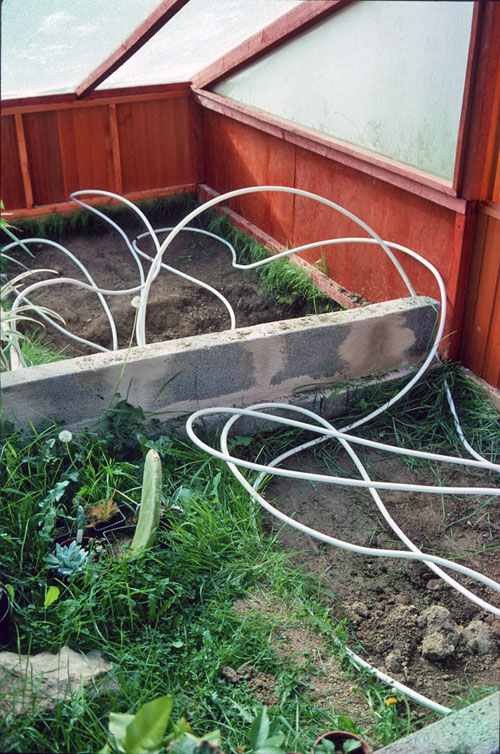
When complete, that particular prototype served as a
high humidity tropical house for a number of species. A
combination of (non-UVB transmitting) twin-wall
polycarbonate sheet and UVB transmitting panels may be
used in any desired combination to produce a balance of
UVB and heat conservation. This particular building was
300 square M., one of the larger units of this type we
have used. It included an additional oil-fired hot-water
central heating system permitting year round use, even
in the winter months.
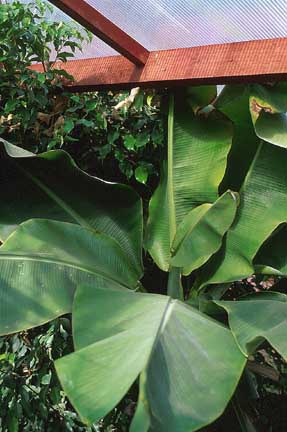
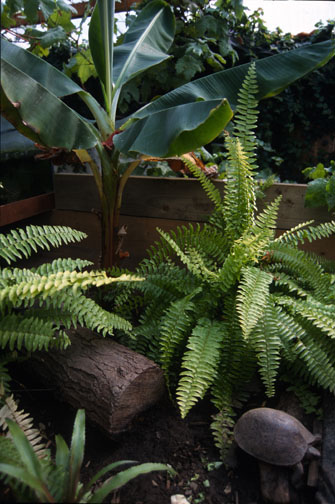
These
enclosure are normally best used as part of a larger
'free air' outdoor enclosure with easy access to the
'greenhouse' part. Animals should not be confined to the
enclosed part only. It is
critical to note that these enclosures are intended
for use in cold climates and that over-heating is a
serious danger if they are used incorrectly.
Their purpose is to reduce reliance upon artificial
light and heat and they would normally be used only at
times when indoor maintenance would be employed, for
example, in early Spring and Autumn/Fall. It is worth
repeating that this type of enclosure can generate
extremely high interior temperatures very quickly in
full sunlight. It is therefore
vital that there is adequate ventilation, some form
of effective temperature control, and adequate
internal cool retreat zones (such as a burrow). Intelligent
use of 'reflectors' and 'collectors', such as black or
white/silver material, also offers different ways to
control internal temperatures.
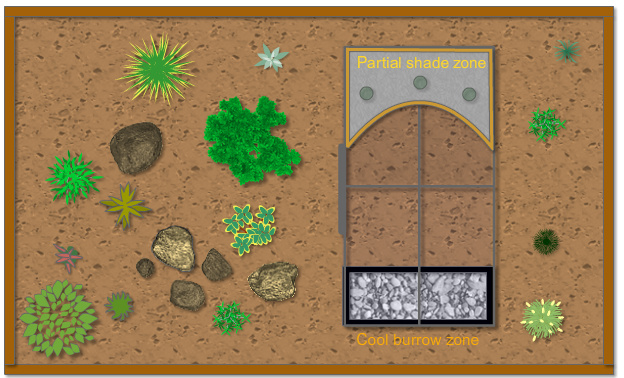
The 'Climateframe' supports
a roof of 'Lumisol' material mounted on wooden or
metal frames. A partial shade zone is made from graded
mesh material with some holes to replicate the
kind of shade found under plant cover. This can be
added to, or reduced, by simply adding or removing
frame overlays containing suitable material. A cool
burrow zone is also provided by means
of a 'box' end with white or other
reflective material on its 'roof' to reflect
heat. This 'burrow zone' includes soil and
stones to allow the animals to create their own
cooler microclimates.
The exact
amount of 'seasonal extension' that can be gained using
these principles very much depends upon geographical
location and the size of the terrarium. In general,
larger units are more efficient than smaller ones. There
really is no limit to the maximum size. These designs
can be as large as required. Some users have reported
very substantial increases in the amount of outdoor vs.
indoor time achieved, from as little as less than 6 -8
weeks a year to 3.5 months. In warmer climates, up to 9
months a year can be achieved – all with near zero
running costs and natural UV-B and Infrared at more than
acceptable levels. To date, test units have been used
with tortoises, turtles (with an interior pond), green
iguanas, bearded dragons and snakes.
One of
the key features is that the design is inherently
flexible and may be adapted easily to suit different
seasons or weather conditions. In this example, the base
unit, intended for terrestrial tortoises, is
covered first by removable panels with anti-predator
wide mesh:

Next, modular removable panels are constructed to
support the UV-B transmitting film. These can be
used collectively, or singly, as required:
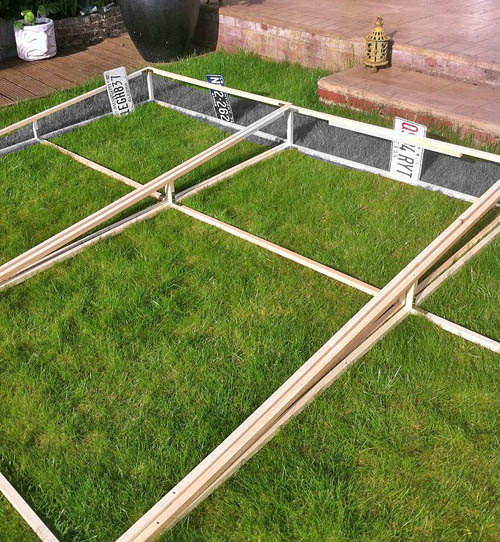
Here, just one frame is in position, providing extra warmth at one end of the habitat only. In summer, frames with partial or 'dapple' shade provision can also be added or removed as necessary (all these photos (c) Big Joe):
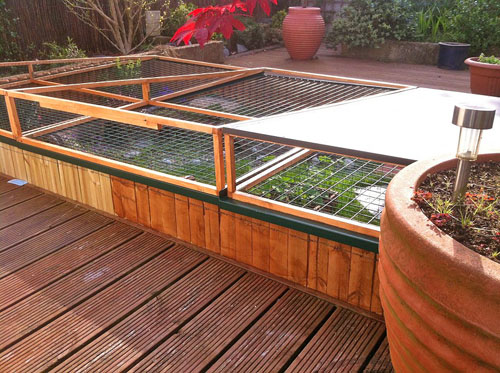
The design consists of five principle functions:
1) Natural UV-B provision by means of new-technology thin-film plastics.
2) Natural water-filtered IR-A from sunlight.
3) The ability to offer any kind of humidity option, from arid to humid tropical, easily, in almost any environment, to suit a wide range of species. Internal ponds can also be installed.
4) A complex thermal environment with full sun, full shade, partial shade and burrowing microclimates.
5) Expandability and minimal energy inputs.
In addition, it was essential that the design was straightforward to build, with readily available materials, and that the cost to build was as reasonable as possible. Only a design that is simple, cost-effective and versatile would prove attractive to keepers.
Natural UV-B provision
Until recently, options for making use of natural UV-B in enclosed terraria were very limited. There were a few (very expensive) types of UV-B transmitting glass and plastics available, but they were difficult to source and not necessarily easy to install and use. The main drawback, however, was cost. These materials were very expensive indeed. And being rigid, equally expensive to ship and handle. Recently, however, some new thin-film flexible UV-B transmitting plastics became available, and we spent 18 months testing them to establish their suitability for use by reptile keepers. On the face of it, they offered many advantages. They were very reasonably priced compared to rigid sheet materials, easy to handle and install without specialist tools, and appeared to offer very acceptable rates of UV-B transmission, Infrared transmission and heat retention. Two brands were trialled. Lumisol and Sunmaster. Both delivered excellent results and furthermore, withstood two seasons outdoors without visible degradation. Manufacturers of both claim a useful life of 5 years or more in general use. Given their low initial cost and ease of replacement, this is more than acceptable.
I am indebted to Frances Baines who independently tested these materials for UV-B transmission with the following results.
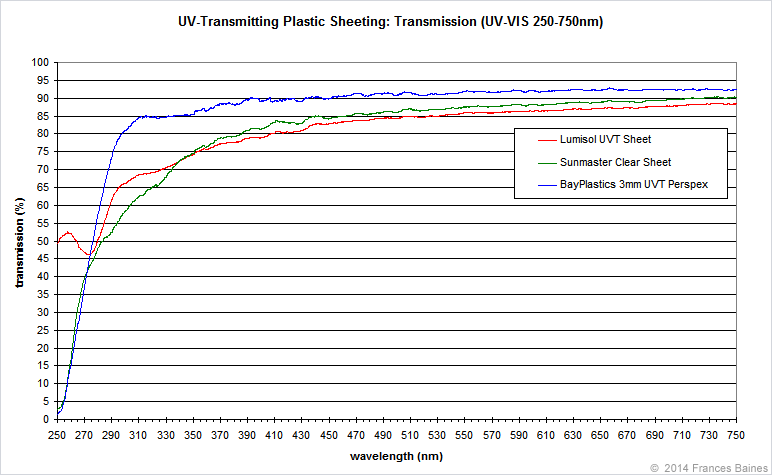
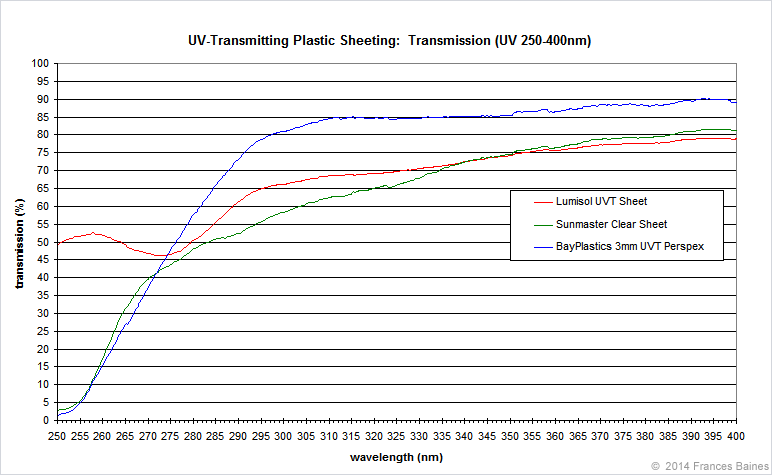
This may be compared to other available materials:
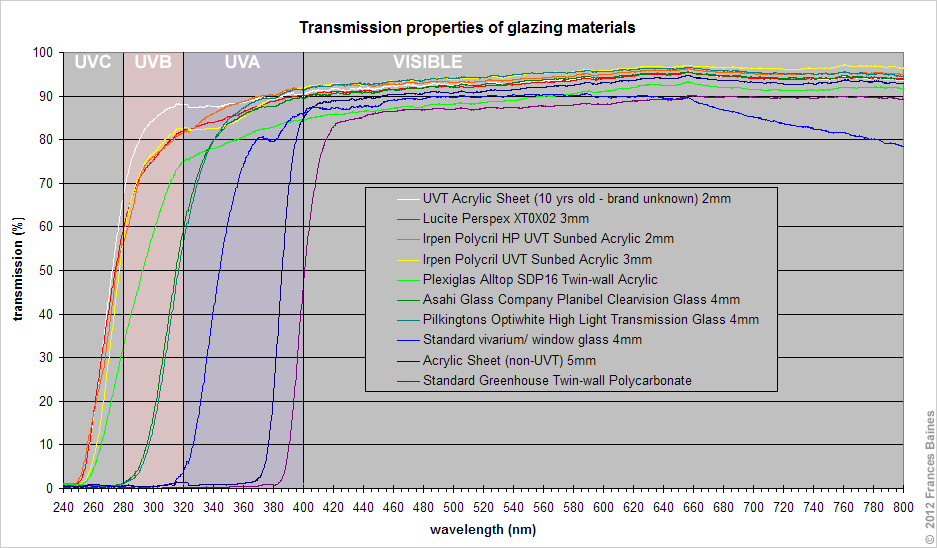
It is
also informative to look at a simple indoor-outdoor
comparison of UV-B levels where UV-B under natural
sunlight are compared to simultaneous readings beneath a
sheet of 'Lumisol' film. Readings were taken of both the
UV Index and of microwatts per square centimeter:


This may
be compared with a standard type (non-UVB transmitting)
horticultural plastic film, 'Tuftane':
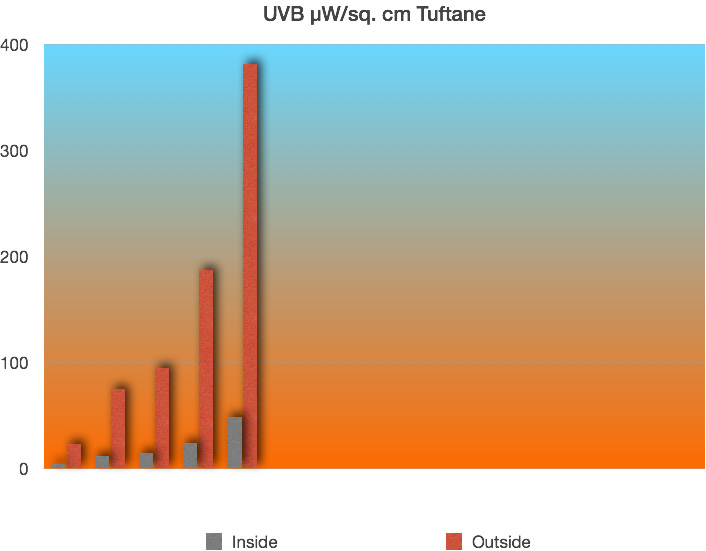
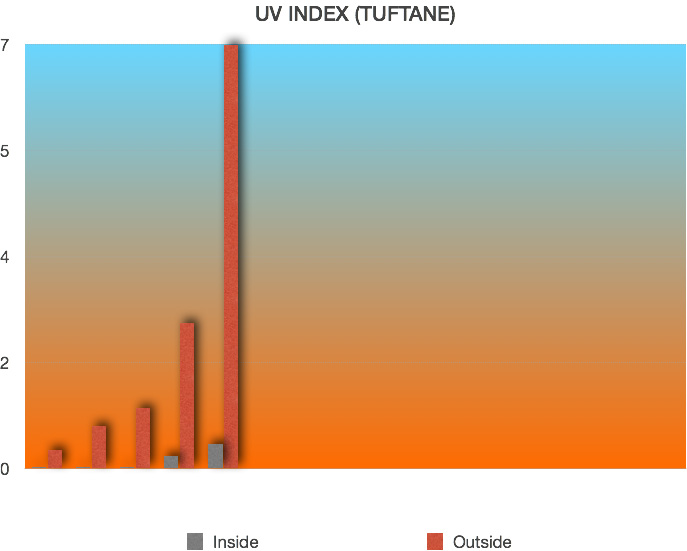
The difference is dramatic. The net result is that both Lumisol and Sunmaster provide very adequate UV-B transmission at the critical wavelengths for vitamin D-3 synthesis and as such, are of considerable importance to reptile keepers.
Both materials are easy to install either on 'hoops' as used in agricultural poly-tunnels as greenhouse replacements, or upon rigid frames, as used in our own design. It can be used alone, or in combination with other materials where structural limitations dictate, i.e., as UV-B transmitting panels in an otherwise standard structure. While the most expensive materials (UVB transmitting cast Perspex sheet) do offer technically superior performance in terms of UV-B transmission, the practical difference is relatively slight, and the levels achieved under Lumisol and Sunmaster are very acceptable indeed at the most critical wavelengths. We were able to rear juvenile Testudo graeca graeca using these materials exclusively, without any additional artificial UV-B or D3 supplementation, to bone densities equivalent to wild examples. We are therefore quite satisfied that they are safe and effective in use. In northern climates the clear varieties, which offer maximum transmission across the full spectrum should be used for most species, though further south, or for some rainforest species, the diffuse varieties may be preferred.
A further advantage of this material when used to create an outdoor terrarium is that natural frequencies of daylight are also present, together with normal and natural UV and IR diffusion and 'scattering'. This contrasts sharply with the conditions present under artificial light and heat sources. Such 'scattered' and diffuse sources of heat and light have important implications for reptile behaviour and physiology, some of which we are only beginning to understand.
Water-Filtered
IR-A (WiRA)
All of these specialist films allow animals to take advantage of natural Infrared and greatly minimise (or even eliminate entirely, depending upon location) the need for artificial basking sources. This is of enormous importance to overall health and development. For a more detailed discussion, and numerous examples, of this topic see our earlier report into the health effects of basking lamps on reptiles.
The use of these new plastics permits not only natural UV-B usage, but critically, allows this in combination with natural wavelengths and patterns of Infrared use.
The results speak for themselves. There is no discernible difference between patterns of natural (outdoor) infra-red in reptiles and the patterns observed using thermal imaging cameras of infrared use under these films. By comparison to the patterns observed under artificial basking lamps the results can only be described as dramatic. There is 'deep' and very even heating, even to the extremities and the unnatural surface heating seen with typical artificial sources is entirely absent. It should also be noted that the 'dehydrating' effect of typical basing lamps is also entirely eliminated.
This is
immediately obvious when comparing results from a
thermal imaging camera.
Inside 'Climate Frame'


Note the particularly even heat, right to the plastron and extremities. Subjectively, the entire animal feels like a 'hot rock', which is exactly how they feel after basking in the wild. The 'top to bottom' even heating pattern is very evident in this image:

Under artificial basking lamp

Humidity control
Different species require very different levels of ambient humidity. In captivity, many keepers have tried to 'overcompensate' for the severe drying effects of artificial lamps by providing completely unnatural elevated levels of humidity using 'moist hides'. This exposes the animal to sustained levels of humidity that it may never experience in nature, and this is not without consequences. One particular effect is over-softening of the keratin and an increase in susceptibility to bacterial and fungal pathogens. This author has always maintained that it is far better to provide a truly suitable environment in the first place than to attempt to 'fix it' using artificial and potentially risky methods such as this. As to what constitutes a 'suitable environment' for any given species, the point of reference for this should be reliable data from the environment in which the species inhabits in nature. It is of course extremely important that this understanding is based upon genuine, reliable data and not upon ill-informed guesswork.
If a truly suitable environment is provided, there is no need to provide completely artificial and extreme measures to compensate for inherent defects caused by poor design elements elsewhere in the habitat.
Humidity
is primarily controlled by means of airflow restriction
and by the amount of water added to the enclosure. High
rates of airflow with little additional water will soon
result in an arid environment, while lower rates of
airflow with larger amounts of added water will rapidly
cause a rise in ambient humidity. This is absolutely no
different from the methods employed in agricultural
greenhouses. To obtain a correct or desired level of
ambient humidity at any given temperature it is simply
necessary to balance the rates of airflow and water
inputs. By this means, it is relatively simple to create
a wide range of humidity levels, either on a constant or
upon a cyclic basis.
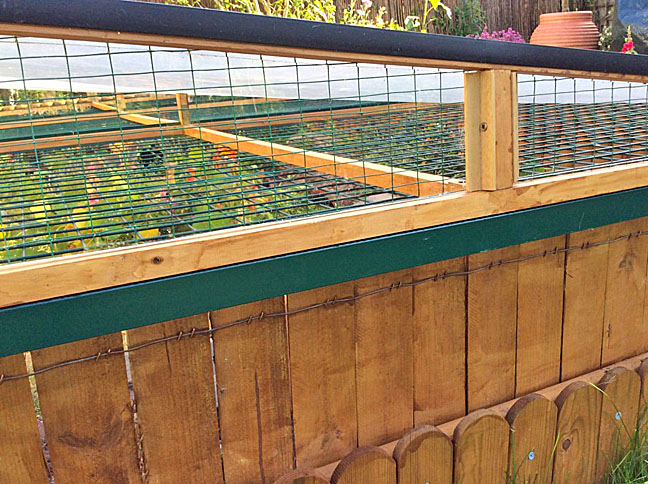
Open-mesh passive side-vents (Photo:
Big Joe)
Various means may be employed to add water (their
suitability depending upon the species being maintained)
but electronic 'self-watering' irrigation systems,
misters and sprayers can all provide useful options.
These can range from simple to more complex, with timers
and 'electronic leaf' type sensors being used to
carefully create and control almost any type of
microclimate.
These
illustrations show just some of the heat-flow and
environmental humidity possibilities.
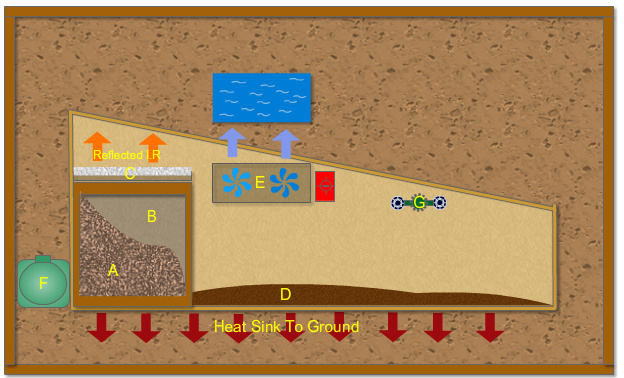
A= Substrate for burrowing inside
insulated compartment, B = Air within insulated
compartment, C= insulating material overlaid with
white reflective layer, D= substrate within the unit
(this should be in good thermal contact with the
subsoil), E= Fan assisted or passive air vents, F=
Water tank or source for G = Sprinkler or mister
system with sensors or timer control.
The
'Climateframe' can also be put into 'reverse' mode where
the cool, or burrowing zone, becomes warmer than the
outer covered zone. This is achieved by removing the
reflective 'roof' and replacing it with a dark, heat
absorbing material. The heat flow then changes to:
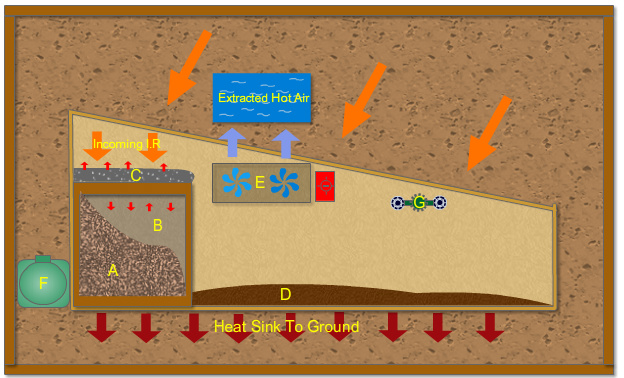
This kind of adaption is only
likely to be required in exceptionally cold
climates and only with certain species. In
this case 'C' = the heat reflecting and
insulating layer is replaced with a
heat absorbing layer.
Some
experimentation in your own climate and particular
situation may be required, but our results indicate that
it is fairly easy to produce just about any required
level, from those demanded by desert dwellers to those
suited to rainforest species. Indeed, one person
involved in our trials successfully used such a unit for
tropical amphibians, and another used a vertical, larger
variant of this design for Green iguanas.
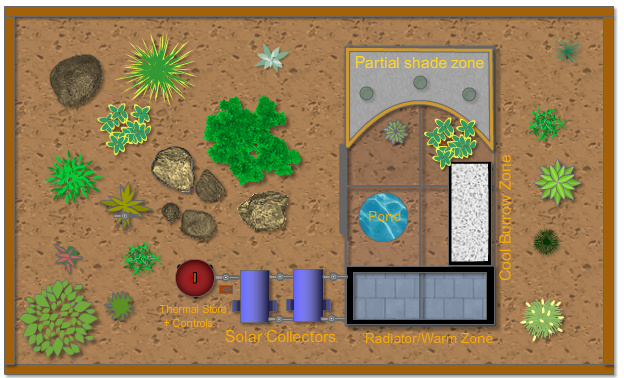
In this extended example, extra
heat was collected via additional solar
panels and stored in a large, buried,
insulated thermal store. At night the collected heat
(in hot water) was re-circulated to radiators
in the warm zone. An additional cool
and burrowing zone is also included, and in
this example, a pond is also present to raise
ambient humidity for tropical species.
Our own trials concentrated upon use for arid habitat
dwellers. It should be noted that with larger, more
agile species some form of physical protection for the
UV-B film is invariably required. This can be achieved
using metal twin-weld mesh on a sub-frame. This will
prevent contact, tearing and escapes. UV-B loss is
minimal with medium-wide meshes. Very fine mesh will of
course block substantially more UV-B. According to
figures provided by Frances Baines (http://www.uvguide.co.uk/uvinnature.htm)
typical chicken wire blocked 7% of UV-B, while 1/4”
twin-weld mesh blocked 35-37% of UV-B. It is advisable
therefore, to use as wide a mesh as possible, consistent
with preventing damage or escapes. The more the total
surface area of the wire used, the more UV-B will be
blocked. Of course, some species may require no such
protective measures in the first place.
It is
also worth noting that misters and evaporation effects
can be used in hotter climates or in peak summer seasons
in moderate climates as a means to reduce interior
temperatures. This can be done in such a way that heat
will be rapidly lost via evaporation without a large
effect upon ambient humidity, as the water vapour
created is immediately vented outside – though this
method is best suited to housing located in areas that
have naturally low ambient air humidity. In humid
climates it will not work and will merely increase the
humidity within the unit. We found that it was highly
effective at our test site in Almeria, Southern Spain,
and should work well in similar climatic zones, however,
such as Arizona in the US.
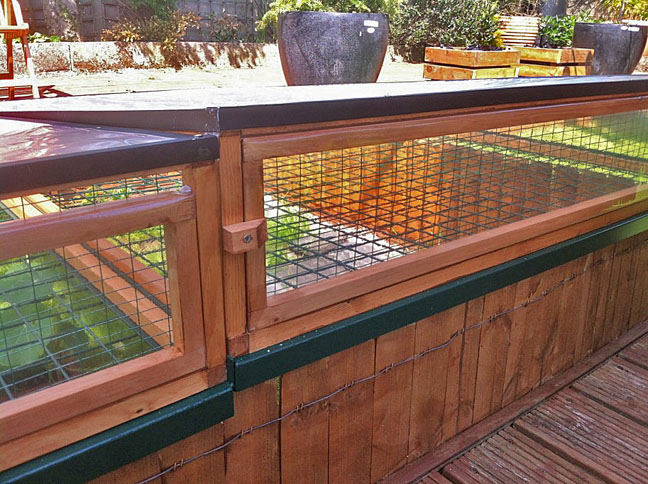
Different, interchangeable
panels can be added and removed as required
to suit different seasons. In the example shown
these open mesh panels can be changed to fully
closed panels if higher temperatures are
required or if humidity needs to be adjusted
(Photo: Big Joe)
In
moister environments, increasing the rate of airflow
through the unit is generally the most effective way of
reducing interior temperatures when required, either
passively or by means of fans. These too can be
controlled by means of electronic thermostats and it is
quite easy to construct a fan system based on low
voltage fans (e.g, computer type fans) that will run
directly from photovoltaic panels.
Side
view
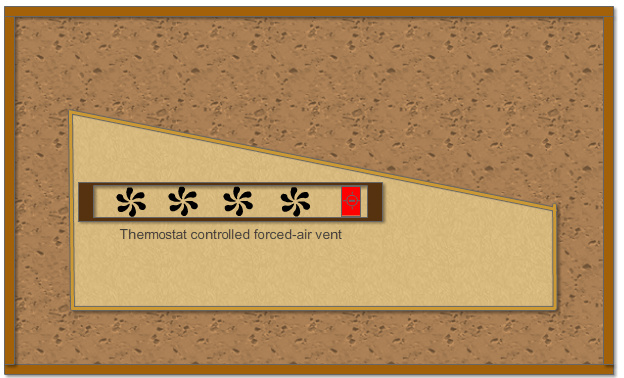
Front
view
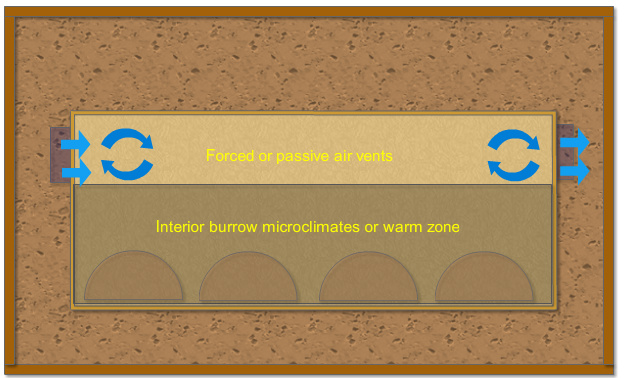
Temperature gain and stability
Units employing the UVB transmitting film were tested at various locations from Southern Spain to Scandinavia. In all cases significant gains over ambient were recorded. Air temperatures within and outside the units were compared, and in addition, body temperatures of tortoises inside the unit were monitored. As the units were tested under a very wide range of conditions, at various latitudes, and the sizes of the units on test varied considerably, it is impossible to provide too many specifics, but examples of ambient air temperature comparisons include:
London
Ambient: 9C -
Inside unit: 20C
Gain: 11C
Leeds
Ambient: 8C
Inside unit: 18C
Gain: 10C
Southampton
Ambient: 13C
Inside unit: 25C
Gain: 12C
Canterbury (Kent)
Ambient: 17C
Inside unit: 31C
Gain: 14C
A general overview of measurements taken suggests that an air temperature gain between 10C to 15C would be typical in early Spring in moderate or somewhat cloudy conditions. Temperatures do of course vary hour by hour, and there are other variables such as time of year, cloud cover and orientation of the units to the sun. This is a typical report compiled by one of our beta-testers in the UK:
“Thursday
15th May 2014
All times GMT
Weather clear sky full sun
09.00 all three frames in place back panels off
Outside temp 15.5
Inside 16.2 shade
Inside 16.7 in sun
10.00 all three frames in place back panels off
Outside temp 19.6
Inside 18.1 shade shade
Inside 24.1 in sun
Carapace 40.0
Plastron 35.0
11.30 all three frames in place with back panels
on
Outside temp 22.7
Inside temp 22.0 in shade
Inside temp 30.0 in sun
Torts now free roaming in garden
12.20 all three frames in place with back panels
on
With all frames and panels on temps have shot
up.
Outside temp 20.9
Inside temp 28.0 in shade
Inside temp 37.4 in sun”
These results are entirely typical of other reports we received and collated over a 14 month period.
Another report from Sweden cited these figures:
“Sunday
18th May 11:00, Västerås, Sweden
Weather sun
Outside temp 17°
Inside temp. 27°
Tort temps (T g ibera 50-75 g)
Tort one in enclosure
Carapace. 32°
Plastron 29°
Tort two outside inclosure
Carapace 29°
Plastron. 24° “
By June, even greater differentials are recorded:
“Saturday
7th June 2014 13.40 GMT
Frames have been on since last night
Weather sun / cloudy light breeze
All frames in place including rear panels
End sections open
Outside temp 24.8
Inside temp. 39.8
Ground temp shade area 29.2
Ground temp full sun highest 49.1 temp taken off
welsh slate lowest 36.0 temp taken off soil/sand mix
Inside hide temp 20.7 ( this reading was taken
right at the deepest part of the hide ) this hide has
full sun
Inside hide temp 16.5 ( this reading was taken
right at the deepest part of the hide ) this hide has
full shade.
Tort one in enclosure / tort half in/ out of hide (
hide in full sun )
Carapace. 36.7
Plastron 33.7
Tort two outside inclosure roaming in full shade.
Carapace 29.8
Plastron. 29.6”
Some comparisons obtained using data-logger temperature recorders:
External Air Temperatures
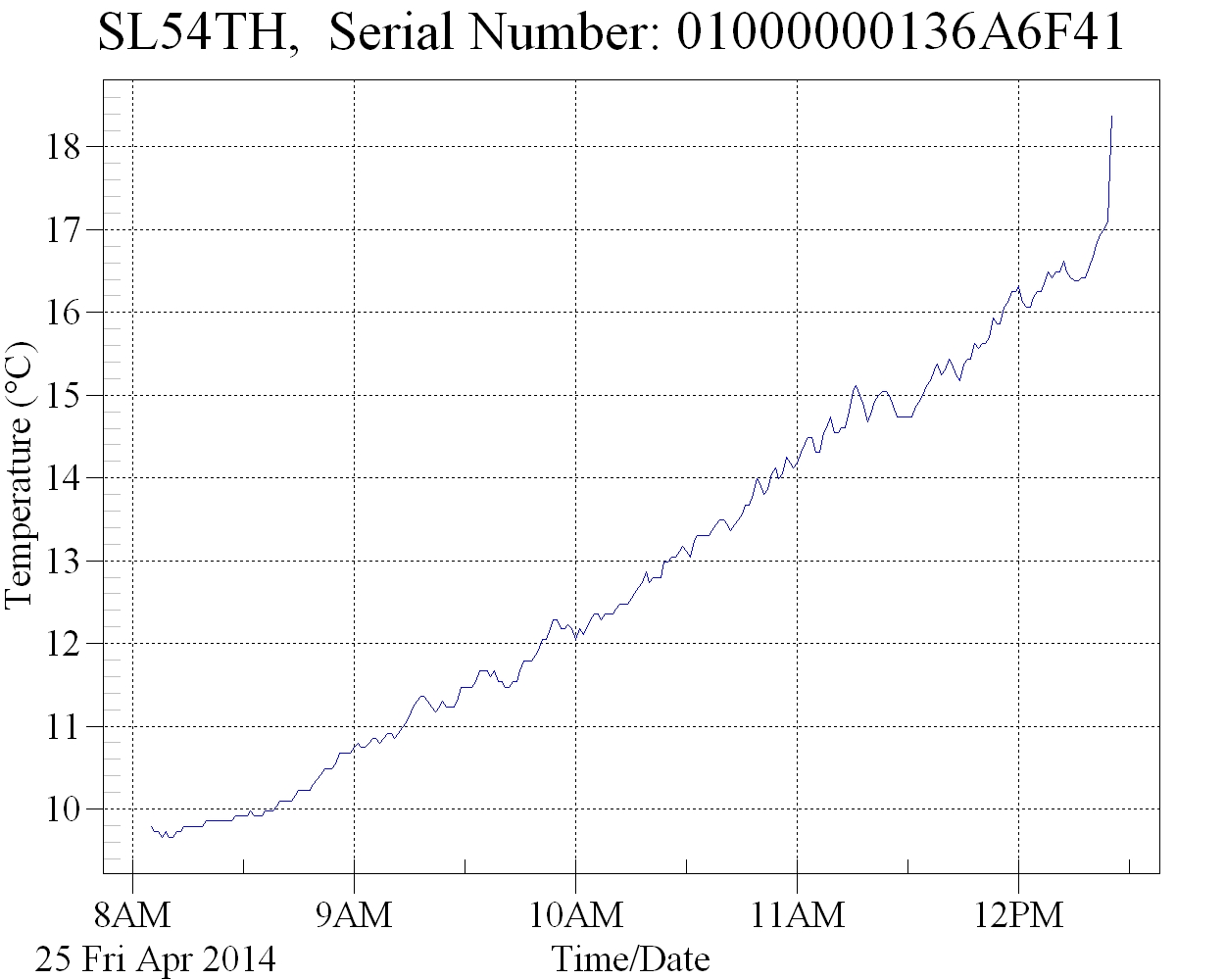
Internal Air Temperatures
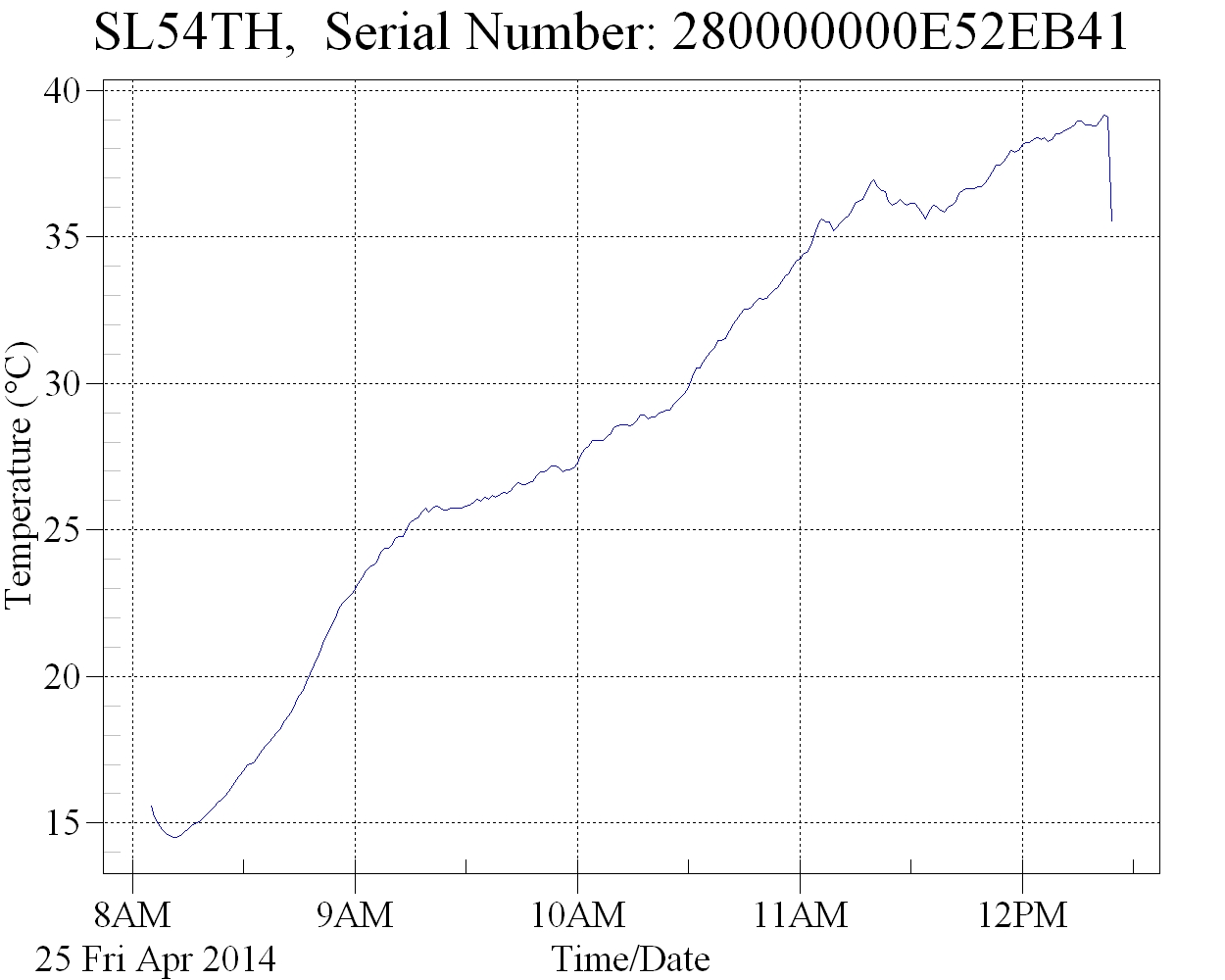
The key
point is that in all cases very substantial increases of
both ambient air temperature inside the units, together
with significant increases in both carapace and plastron
temperature are experienced over conditions and body
temperatures outside of the units, and that this is
achieved with no additional energy inputs. No basking
lamps were used, and no artificial background heating
employed.
It is
important to note that by using various basking
strategies, for example, angling of the body, limb
extension, and partial isolation from a cooler
substrate, reptiles can substantially raise their
overall body temperature above that of the ambient air
temperature as long as some infra-red is present. So, it
is quite typical to see body temperatures 12-15C above
the ambient air temperature. In terms of these units,
this can translate to:
External Air Temperature = 12C
Internal Air Temperature = 22C
Reptile's
Body Temperature = 33C
The basic design of these units can be extended. It is entirely possible to add additional solar collectors and accumulators to save heat during the day, to provide additional heat at night – although with many species low temperatures at night may not only be normal, but beneficial. The need for this (or for supplementary artificial overnight heat) is entirely dependent upon the species concerned. It may not be required at all for temperate species in some locations, while tropical species will almost certainly require it. In any event, such need will be considerably reduced over typical methods of maintenance as a significant proportion of total heat requirements will be met from solar resources.
It is extremely important to understand that smaller units, by themselves, will not “hold” heat to anything like the same degree as larger units. In this respect, the larger and the greater the volume and mass of the unit, the more heat will be retained and for longer periods and the more minute-to-minute variations will be “evened out” (though as pointed out, adding more thermal storage externally, by means of circulating hot solar water systems is certainly possible).
Over the
past 25 years we have used similar designs of housing
from a few meters square up to structures 30M X 12M, and
in every case, the larger units performed the best,
however, even the smaller units offered considerable
improvements in temperature compared to what could be
achieved without them. These design concepts are very
flexible, and can be easily adapted to different
locations and situations. We have created near desert
condition in wet and windy Wales, UK, and humid tropical
conditions in the semi-deserts of Southern Spain… it
really is as straightforward as understanding the
principles involved and applying them imaginatively.

A warm, arid habitat created in one
of the wettest places in Europe without artificial
heat or light.
The new UV-B transmitting flexible plastic sheet in combination with these designs is capable of transforming our expectations of how to keep reptiles in captivity. Few would dispute that where possible, some form of outdoor maintenance is best – and these designs and concepts greatly extend what is possible, even in colder, challenging climates. The less we have to rely on artificial light and heat sources the better too, not only for the animals subjected to them, but also from the point of view of our own environment. This takes us much closer to a genuinely 'naturalistic' method of husbandry using the best possible light and heat source out there for reptiles – the sun itself.
Thanks
and acknowledgements
Special
thanks to everyone at the Tortoise Trust Forum (www.tortoisetrustforum.org)
for testing various components of this design and for
collecting very important data from such a wide range of
climates and locations. Thanks also to Frances Baines
for her comments, support and diligent testing of the
UV-B properties of materials. The Tortoise Trust Forum
also hosts a discussion area that concentrates upon
practical housing methods and construction of terraria.
Practical construction -
photo guide
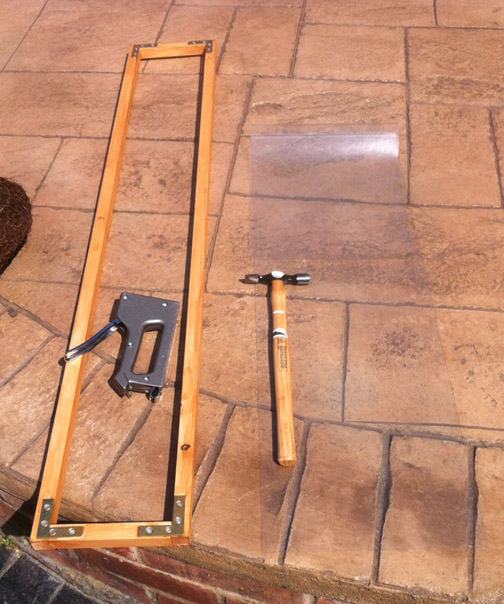


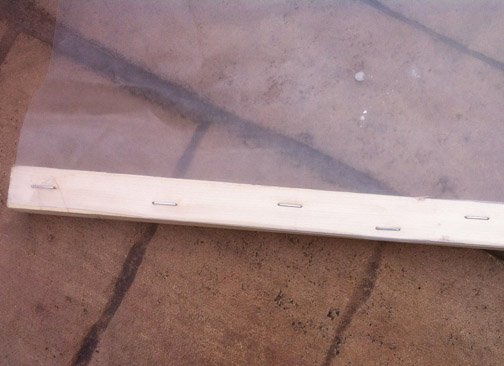
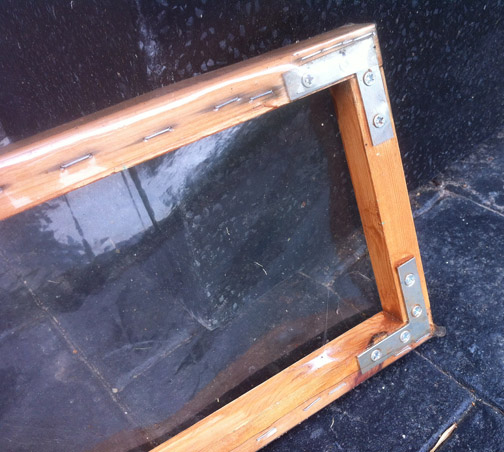
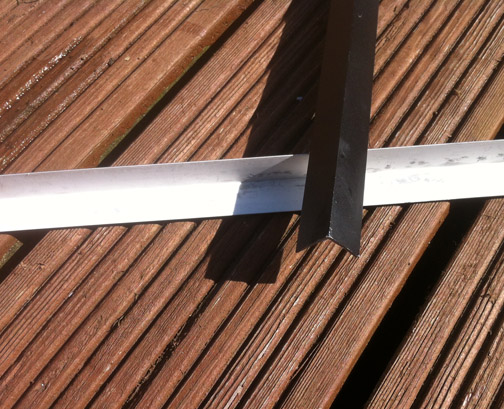
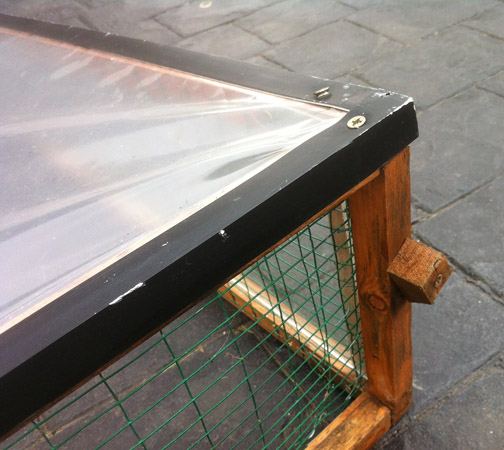
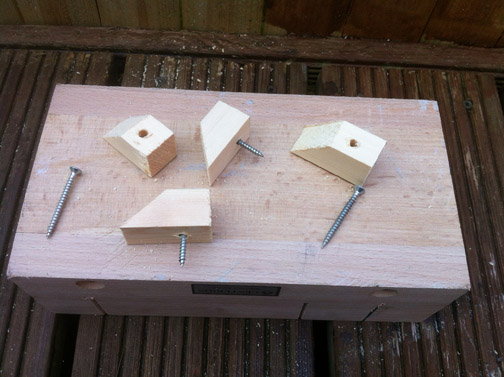
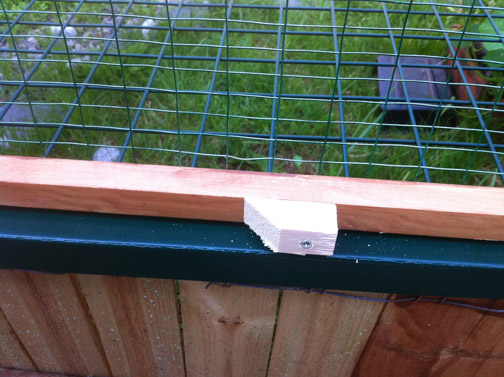
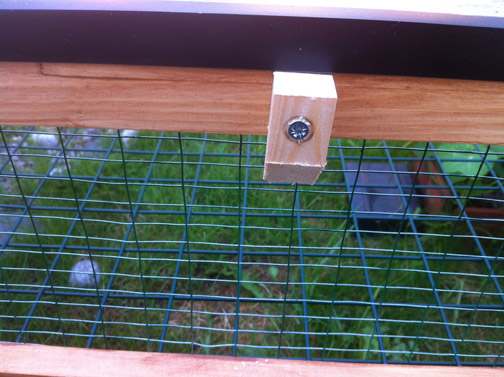
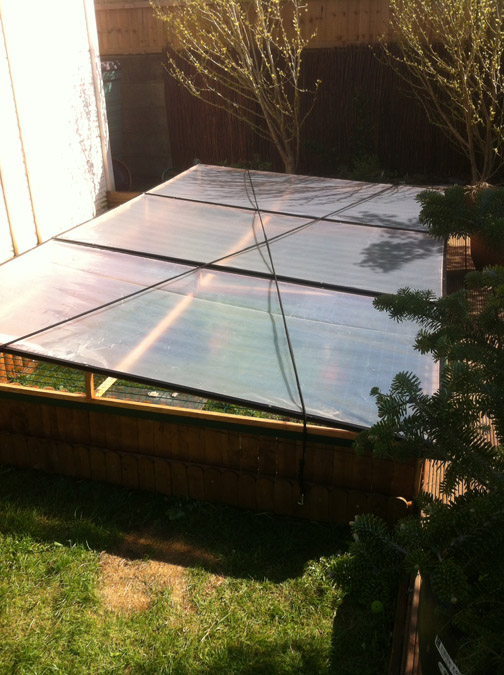
Thanks to Big Joe for construction photos.
License to use this design
This
design is based upon original work carried out by A.
C. Highfield and the Tortoise Trust. Keepers may use
it freely. Any commercial use or sale of terraria
based upon this design is prohibited without prior
content in writing, however. If you wish to use this
design in a commercial context us, please contact us
for terms and conditions.
Copyright
Tortoise Trust 2015. All rights reserved.